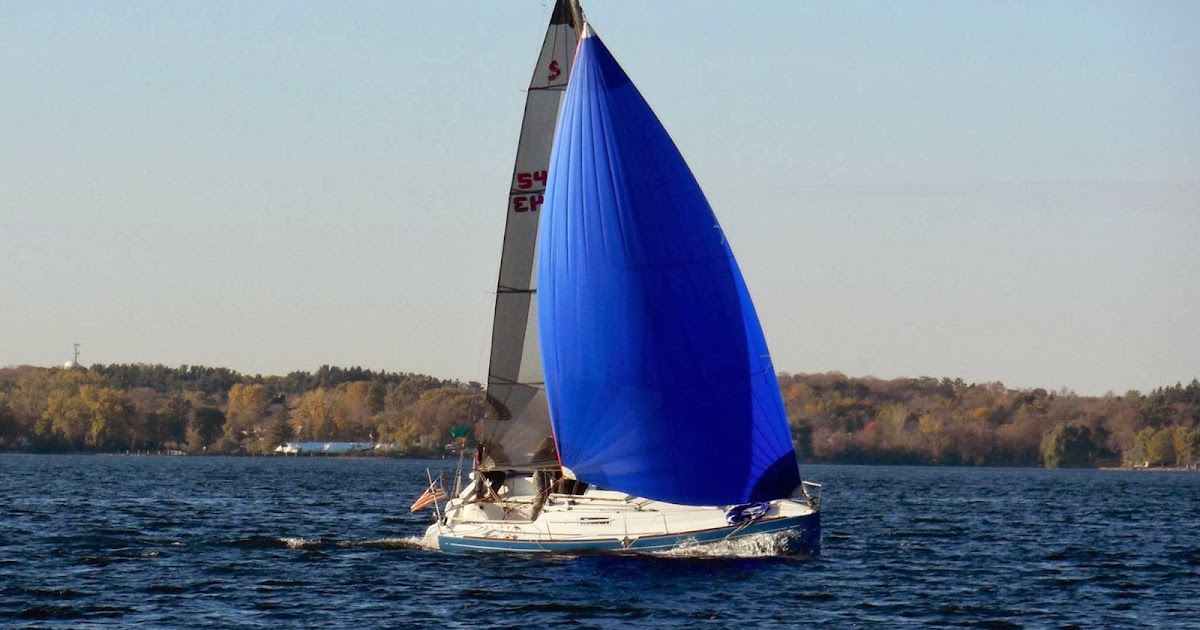

Once finished we really had nothing to show for all this work and money, so, we bought Island Spirit a cool new CODE ZERO furling spinnaker. Then Hurricane Maria damaged us and we came back to Stuart Florida for repairs by Mack Sails. After repairing and rebuilding our new mast and rigging, we finally got the boat back to where it was when we stored her in Puerto Rico. Usually it remains as an unholy mess inside the cabin.We added a new sail to our rig, a CODE ZERO. However the problem I have with the asymmetric is that, launching it (1960's dinghy style!) from a bag in the cockpit, having flown it once, finding time to get it neatly packed ready to fly again can be a problem (I'm usually single handed). That would suggest that a genoa/genacker wouldn't be so much of an advantage. In fact, compared to the video my BC20 asymmetric seems flatter cut, but that might just be the wind direction during filming. The bowsprit on my BC20 allows me to get the luff more or less straight when needed (photo attached), allowing me to carry the sail on a broad to close reach (the only problem then being the extra speed brings the relative wind more ahead and I have to bear away to keep carrying the sail!). SB are certainly doing some good video work now - I notice a few have been added to their web site! Viewing the Chichester Harbour video I notice that, at least on the BRe, the asymmetric appears to be hoisted right up to the mast and with the tack close to the boom, but it still has a lot of curvature in the luff. So in my opinion well worth the £300 for the sail and the £50 for the RWO continious furler. As the BR20 rig was designed for the larger AS i have no concerns flying the code zero from the pole. With the continuous furler lines for the code zero fed back well in to the cockpit i can furl and unfurl the sail very easily on my own on all points of sail when the code zero can be used. As Jonathon pointed out the standard sail set is excellent, but in light winds the self tacking jib is a little on the small side and without a separate halyard on the end of the jib boom to allow you to ease the clew outhall and put some belly in the jib it doesn't provide a lot of power. We used the sail for over 4 hours of sailing and tried furling several times when on different point of sail, the results so far are very encouraging, with the light winds we had on that day the difference in boat speed when on a broad reach for example was half a knot with the standard jib set and up to 3.5 knots with the jib furled and the code zero set. The code zero has a rope sewn into the luff. The code zero is again flown from the spinnaker pole with an RWO continuous furler on the tack. I have only used it once since the purchase (November last year) as the conditions at Rutland have been too strong since on my visits. To enhance the boats performance in light winds and when I'm solo i bought a code zero (lightweight genacker) as you quite rightly described it. The furling kit that will do the job is a top down furler but they are around £500, so not an option. Furling was reasonably successful but due to the shape of the AS and it having no wire or rope in the luff the sail would not furl tightly at the top of the sail, the wind soon caught the unfurled section and caused the sail to flog.
.jpg)
I used the spinnaker pole with an RWO continuous furler. My BR20 in light winds is sluggish, flying the asymmetric on a run and possibly round to a beam reach certainly gets the boat moving but with my experience i only feel comfortable using this sail when I'm not sailing solo. I also hadn't seen Guy Rossey's posts and that makes for interesting reading. But I keep thinking I might explore the feasibility and cost. I'm still undecided on that and a lack of this being a significant problem has led to inaction. My hesitation is whether the extra flexibility I will enjoy on the water is worth the cost and additional rigging, etc, that will get in the way and add to setup times, etc. I've not done anything about it but have thought about it a lot and I don't see why it wouldn't work so I don't think it's a "silly season|" suggestion! That brought me to think about a Code 0 last year. I've come to the conclusion that if I added sail area it would be to handle lighter wind conditions and hence would want something that is effective on as wide a range of points of sail as possible. I thought I'd get an asymmetric after a couple of seasons of sailing my BRe but then I found the downwind performance is fine - OK, might not be as comparatively outstanding as other points of sail but the heavily roached sail, etc, does well downwind and I've never felt the boat lacking and I'm not looking for maximum performance. I think this is definitely worth investigation.


 0 kommentar(er)
0 kommentar(er)
